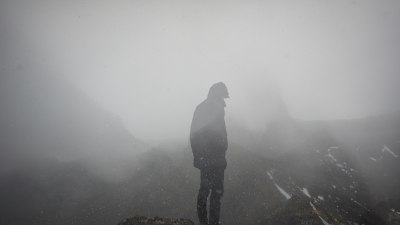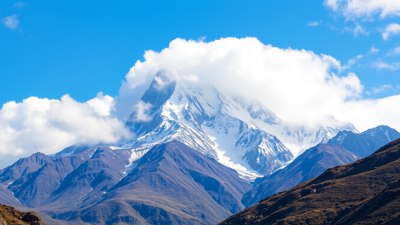Why Fog Sometimes Appears Out of Nowhere: The Hidden Triggers
Discover the hidden triggers behind sudden fog formation and understand the science of this atmospheric phenomenon.

Fog is a fascinating meteorological phenomenon that can appear unexpectedly, transforming the landscape into a mystical scene. Understanding why and how fog forms can help us appreciate its beauty and the hidden triggers that cause it to emerge from seemingly nowhere. In this article, we will explore the scientific principles behind fog formation, the different types of fog, and the environmental and atmospheric conditions that contribute to sudden fog appearances.
What is Fog?
Fog is essentially a cloud that forms at ground level, consisting of tiny water droplets suspended in the air. These droplets reduce visibility, making it difficult for drivers and pedestrians to navigate through foggy conditions. While fog can create visually stunning landscapes, it can also pose significant dangers, particularly on roadways. Understanding fog is crucial for both safety and appreciation of nature.
How Does Fog Form?
Fog formation is generally a result of cooling air, which leads to condensation of moisture. There are several ways in which air can cool and create conditions for fog:
Radiation Cooling
Radiation fog forms on clear nights when the ground loses heat rapidly through radiation. As the temperature of the surface drops, it cools the air directly above it to the dew point, leading to the condensation of water vapor into tiny droplets, thus forming fog. This often occurs in valleys or low-lying areas.
Advection Cooling
Advection fog occurs when warm, moist air moves over a cooler surface. As the warm air flows over the cold ground or water body, it cools down and condenses, creating fog. This type of fog is common near coastal regions where warm ocean air interacts with cooler air over the land.
Evaporation Cooling
When cold air moves over warm water, evaporation occurs, leading to the formation of steam fog (or sea smoke). The warm water vapor rises and mixes with the cold air, causing the moisture to condense into fog. This phenomenon is commonly observed in early morning or late evening when water temperature is significantly higher than the air temperature.
Upslope Fog
Upslope fog forms when moist air ascends a slope, such as a mountain. As the air rises, it cools adiabatically, resulting in condensation and fog formation. This type of fog is often seen in hilly or mountainous terrains, creating low-hanging clouds that can obscure visibility.
Frontal Fog
Frontal fog is linked to the meeting of warm and cold air masses. When a warm front advances over a cold front, the warm air is forced to rise, cooling and leading to condensation and fog formation. This can occur during stormy weather or when different weather systems collide.
Microclimates and Local Conditions
Fog can also develop due to localized conditions such as urban heat islands, where cities experience warmer temperatures than surrounding rural areas. This temperature difference can result in the formation of fog as moist air from surrounding regions moves into urban areas.
Seasonal Effects
Fog is more prevalent during certain seasons, particularly in spring and fall when temperature fluctuations are common. In spring, the warming of the earth can lead to increased evaporation, while in autumn, cooler temperatures at night can trigger radiation fog. Humidity levels during these seasons also play a significant role in fog formation.
Role of Humidity
Humidity is a key factor in the formation of fog. The presence of adequate moisture in the air is essential for fog to develop. High humidity levels increase the likelihood of condensation occurring, leading to the appearance of fog. Meteorologists often use relative humidity percentages to predict fog formation, with values above 90% indicating a higher likelihood.
Weather Patterns and Predictions
Weather patterns significantly influence fog formation. Forecasting fog can be challenging due to its dependence on various atmospheric conditions. Meteorologists utilize satellite imagery, surface observations, and weather models to analyze humidity levels, temperature gradients, and wind patterns that can affect fog formation. Sudden changes in weather, such as a shift from high pressure to low pressure, can also trigger rapid fog development.
Climate Change and Fog
Climate change is impacting weather patterns globally, including the behavior of fog. Changes in temperature, precipitation patterns, and humidity levels can alter the frequency and intensity of fog events. As the climate warms, some areas may experience changes in fog dynamics, leading to more or less frequent fog occurrences, depending on the local conditions.
The Mystique of Fog
Fog has captivated humans for centuries, inspiring art, literature, and poetry. Its ethereal quality can evoke feelings of calm, mystery, and even eeriness. Many cultures embrace fog in their folklore, associating it with transformation and the unknown. The allure of fog is not only tied to its stunning visual presence but also to the complex interplay between natural elements that lead to its formation.
Safety Considerations
While fog can be beautiful, it also presents safety challenges. Reduced visibility during foggy conditions can lead to accidents on the road, so it is essential to take precautions. Drivers should use low-beam headlights, reduce speed, and maintain a safe distance from other vehicles. Pedestrians should exercise caution and remain visible to avoid accidents.
Fog may seem to appear out of nowhere, but its development is often tied to intricate environmental and atmospheric conditions. Understanding the mechanisms behind fog formation can deepen our appreciation for this phenomenon. From radiation and advection fog to its various types and the role of climate change, these hidden triggers remind us of the complexity of the natural world. While we enjoy the beauty of fog, we must also approach it with caution and respect, acknowledging the impacts it can have on safety and visibility.











